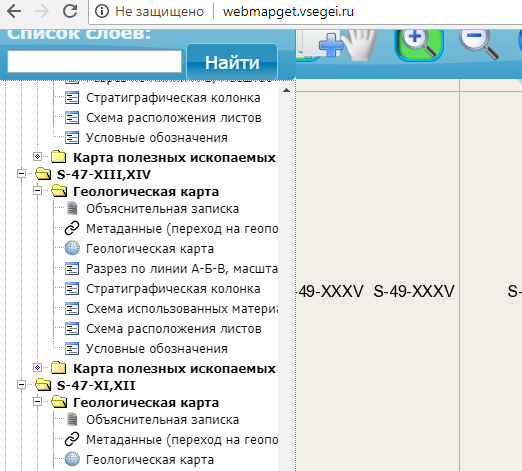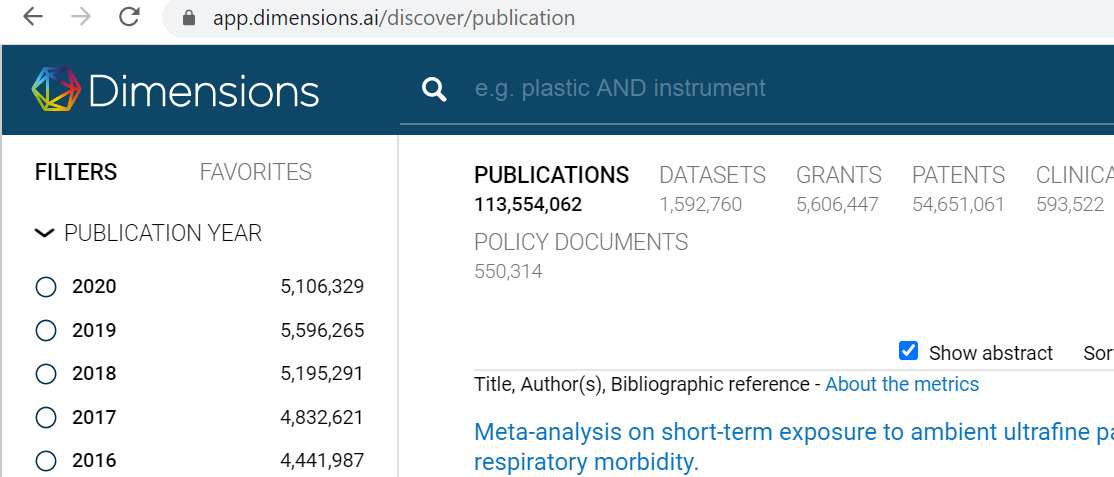As has often been pointed out, the advent of the internet has
forever changed how information and ideas are distributed
(Plotnik RE, Paleont. Electr., Vol. 1, 2010,
palaeo-electronica.org/2010_1/commentary /mainstream.htm )
It is not by chance that I cited as an epigraph an excerpt from an editorial note in the journal Paleontologia Electronica - I am a paleontologist, the main area of my scientific interests is the study of the Jurassic deposits and the remains of cephalopods - ammonites found in them. I decided to undertake this review mainly because I did not come across other reviews of this type, and at the same time, communication with colleagues and speaking to them strengthened me in the idea that very few are able to competently use the modern possibilities of searching for scientific information on the Internet. ... Well, it became interesting to me to place all this on Habré due to the fact that, on the one hand, notes appear here quite regularly, in some way related to scientific publications, and on the other hand, here you can get a response from people,connected with completely different scientific areas and generally far from science, which can give me the opportunity to look at familiar things from a slightly different angle. It is possible that I could have missed some of the methods of searching for publications known to other site visitors, and in this regard it would also be useful to get some kind of response.
Any scientific research involves the acquisition of new knowledge. For this, it is fundamentally important to be able to work with scientific information - first of all, scientific publications, because in order to understand the novelty of one's own results, one must have a very good idea of what and how was done by predecessors. Each scientific specialty has its own specifics, related both to what, how and where they publish, and to who and how they use these publications in the future. One very important feature of the field in which I specialize is that a specialist should ideally know all publications on his subject (for example, any interval of geological time and a group of fossils), regardless of the date, place and language of publication. The same applies to "classical" zoology and botany,which are associated with the study and description of the whole variety of living things (except perhaps that experts on modern organisms, as a rule, are not very well versed in paleontology, and vice versa - paleontologists are also not always well versed in what their colleagues have discovered new. neontologists). By the way, including for this reason, impact factors can say little about the level of a journal specializing in taxonomy: the citation of works is largely determined by the presence of specialists in a particular group of organisms, and the average age of publications referred to by a taxonomist is usually exceeds 50 years.what's new discovered by their fellow neontologists). By the way, including for this reason, impact factors can say little about the level of a journal specializing in taxonomy: the citation of works is largely determined by the presence of specialists in a particular group of organisms, and the average age of publications referred to by a taxonomist is usually exceeds 50 years.what's new discovered by their fellow neontologists). By the way, including for this reason, impact factors can say little about the level of a journal specializing in taxonomy: the citation of works is largely determined by the presence of specialists in a particular group of organisms, and the average age of publications referred to by a taxonomist is usually exceeds 50 years.
There is one important feature that greatly facilitates the work of a taxonomist: thanks to Karl Linnaeus, since the middle of the 18th century, biologists have been using the same "language" to refer to living things - namely, binary nomenclature. A person in this “language” is Homo sapiens, and some grape snail is Helix pomatia. There are also nuances here, due to which different researchers can call the same organism differently, but in any case there are not too many such names, and they are known to specialists.
Even 20 years ago, in order to get acquainted with publications on a certain topic, it was necessary to spend years in painstaking work with library catalogs, abstract publications and countless books and magazines. But in the past years this situation has radically changed - very, very much is available on the Internet. The main thing is to know what and how to look for. True, I will immediately make a reservation that there is far from everything on the Internet, and sooner or later you will still have to visit the library (if possible with a scanner under your arm or a camera in your hands) in search of the necessary work.

Multivolume IODP / DSDP Ocean Drilling Reports - this has been tremendous wealth recently. Now all these volumes have been digitized and made publicly available on the IODP website .
Well, let 's get started.
1.1. Some general information about scientific publications
The following main types of scientific publications can be distinguished, most of which require their own search methods:
1) Articles in scientific journals and other serials (works of scientific societies, institutes, etc.) . Now it is the most massive type of publication, in which the most important information is published. But this was not always the case - some 30-40 years ago, the writing of monographs was also of great importance, but at the dawn of the development of science, most of the scientific data was published in monographs.
As a rule, almost all scientific journals are now distributed electronically, but there are some journals that are still only available in print.
This is the most accessible type of publication. Many scientific journals have been digitized in their entirety and are available online in one form or another (unfortunately, this applies to a small extent to domestic publications).
2) Monographs and collections of articles . Until now, in the descriptive sciences, monographs remain the most important source of both new data and major generalizations.
Unlike magazines, a significant proportion of books are still distributed in print only. The situation with serial publications is somewhat better, but even here the situation is still worse than with magazines.
More or less relatively fresh or, on the contrary, old works (written 100 years ago or more) are available.
3) Abstracts and conference materials... As a rule, they are not peer-reviewed and not edited publications, in which, however, sometimes important information appears for the first time, only then it is more or less fully expressed in articles.
In the last 10 years, such publications, as a rule, have been posted on the Internet in one form or another, but the chances of finding theses of some conference of the 80s on the Internet are close to zero.
4) Dissertation . This is a completely unique source of data, since a lot of information is present only in dissertations, and then, for one reason or another, is not brought to publication or is published in a greatly reduced volume.
The situation is fundamentally different in our country and abroad: in Russia, as a rule, only the most recent dissertations are available for download, while dissertations defended more than a few years ago are officially available only for viewing in libraries (and are sold unofficially from dealers who make money on the imperfection of legislation). Abroad, in many countries, there are projects for the digitization of the dissertation for posting them in the public domain. Perhaps the most interesting of these projects is being carried out by the Dissertation Department of the British Library.- in the future, it is planned to digitize and make publicly available all theses ever defended in the UK. But even now, a large number of dissertations are available for registered users. In addition, anyone who wishes for £ 45 can order the digitization of the dissertation he needs, which will then become available to everyone. Most of the content on this site is not indexed by external search engines ; this, by the way, is not an uncommon situation.
5) Reports . As in the case of dissertations, reports can simply be a treasure trove of critical data that, for various reasons, has not been published in any other form. First of all, these are production reports of geological survey organizations, oil and gas companies, reports on contracts.
This is perhaps the least common type of publication on the Internet. Many geological reports from us (primarily from the number of reports on work performed at the expense of the state) can be ordered free of charge from Rosgeolfond , but they are not publicly available. But the Norwegian Petroleum Directorate in the public domain puts out quite a lot of "raw" materials.
6) In geology, there is another specific type of publication: geological maps and explanatory notes to them .
In recent years, a large number of such publications have been digitized in different countries (including Russia), but it is not always easy to find them. We have geological maps and notes to them posted on the VSEGEI website; unfortunately, the content of notes to geolocards on this site is not indexed by search engines.

This is where explanatory notes to geological maps are hiding.
Nowadays most of the scientific information is published in English, although in all countries scientific publications in national languages continue to exist to one degree or another. But a few decades ago, the situation was completely different, and a large (or, in any case, a significant) part of scientific publications in the main European countries were published in national languages. And in this respect, paleontologists are lucky - their research objects are named the same in publications in any language. Well, now you can translate from almost any language using GoogleTranslate, DeepL and similar online services.

You can get an idea of the number of scientific publications by looking at Dimensions
The number of scientific publications appearing each year is enormous. I think it can be roughly estimated at 15-20 million. In any case, the Dimensions platform has information about about 5.5 million publications in 2019 - and these are only those publications that have DOIs (and not all of them), while a huge number of publications do not have digital identifiers.
At the same time, the number of scientific papers is growing exponentially: about half of all scientific publications were published after 2000, and the number of peer-reviewed scientific journals in the world is now about 30,000 (and thousands of unrefereed pseudo-journals are added to them, publishing anything at the expense of the authors)
1.2 ... Scientific publication formats
The overwhelming majority of publications are posted on the Internet in pdf format - this applies to both recent works, which, if there is a printed version, are printed from pdf, and old scanned publications. Such files are well indexed - google, for example, indexes the content of such files, even if they do not contain a text layer, recognizing them on the fly. But most are not all. 10-15 years ago, when the Internet was slower and there was little disk space, the djvu format created good competition for pdf on the Runet. And now quite a lot of Russian publications (mainly books, less often articles) are posted on the Internet in this form. But search engines index djvu much worse than pdf,and outside the former USSR, this format is practically unknown (although some large online libraries provide the ability to download certain works of your choice in pdf or djvu, for exampleBiodiversity Heritage Library ).
In some cases, publications may be available only for viewing (for example, almost all publications on the website of the Russian Geographical Society , including those for which all copyright restrictions have long been established), and their content in this case remains not indexed by search engines.
Sometimes pdf from such a site can still be downloaded directly - often in the code of the page where the file is available only for viewing, a direct link to the pdf is hidden. In the Chrome browser, in order to see this, it is enough to write in front of the page name view-source: (well, or right-click and click "view the page code"), and then look - is there a link to the file with the "pdf" extension in the code?
It happens that full-text versions of publications are posted in the cloud - on Google Drive ( Ural Geological Journal ) or cloud.mail.ru (magazine "Exploration and Protection of Subsoil" ) - then their content is also not indexed by search engines.
As exotic formats, examples of posting articles from scientific journals can be cited only in the form of web pages (for example, this is how articles from the journal " Arctic and Antarctica " are posted ), in doc (or docx), swf format, or in the form of archives ( Proceedings of the Research Institute of Geology VSU ).
To be continued